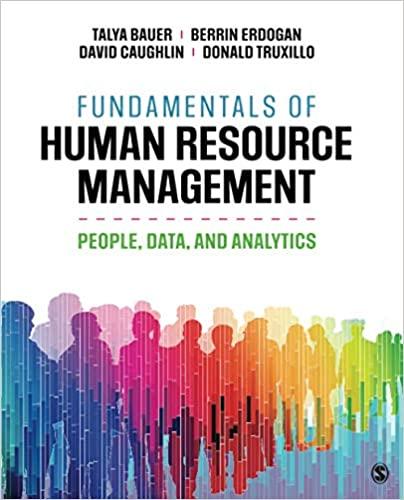Chevron is a large energy company based in San Ramon, California. In 2014, the company launched a
Question:
Chevron is a large energy company based in San Ramon, California. In 2014, the company launched a centralized human resource analytics team, which it refers to as a talent analytics team. Human resource (HR) analytics goes by different terms, such as people analytics, workforce analytics, human capital analytics, and talent analytics; it refers to the process of collecting, analyzing, and reporting people-related data for the purpose of improving decision making, achieving strategic objectives, and sustaining a competitive advantage.
From the beginning, Chevron’s analytics team made it clear that its mission is to “support Chevron’s business strategies with better, faster workforce decisions informed by data.” To that end, R. J. Milnor, the former head of talent analytics for Chevron, stated that “[HR] analytics is really about informing and supporting business strategy, and we do that through people data.” In other words, the analytics team at Chevron understands the important role that people data can play in strategy realization. After all, people are valuable resources for companies, and making data-driven and evidence-based decisions provides companies such as Chevron with an opportunity to attract, motivate, and retain talented people with the right knowledge, skills, and abilities.
In just a few short years, Chevron’s HR analytics team has transformed the way the organization leverages data. By centralizing the HR analytics function, the team created an HR hub that collects data, performs data analytics, and reports findings to HR specialty areas spread across the company. Of note, centralizing the analytics function increased the productivity of analysts by approximately 30% and substantially reduced redundant HR reporting within at least one business unit.....
Case Discussion Questions 1. How has Chevron used HR analytics to inform and support organizational strategy?
2. Chevron’s HR analytics team used statistical models to predict employee turnover with a high degree of accuracy. Based on your own knowledge and experiences, what are some key drivers (i.e., predictors) of employee turnover?
3. What are some different ways in which an organization might leverage HR analytics to attract, motivate, and retain talented people?
4. Chevron has established an HR-specific analytics team. From the perspective of organizational effectiveness, what are some potential advantages of having data analytics integrated directly into the HR function as opposed to a company-wide analytics team that supports HR and other functional areas?
Step by Step Answer:

Fundamentals Of Human Resource Management People Data And Analytics
ISBN: 9781544377728
1st Edition
Authors: Talya Bauer, Berrin Erdogan, David E. Caughlin, Donald M. Truxillo





